Learn how to make a hydrosol to enhance your skin or hair. This aromatic water is made of steam distillation of fresh or dried herbs and has multiple uses.
What is a hydrosol?
Hydrosol is captured during the steam distillation of plant matter that produces both hydrosol and essential oil.
Hydrosol, also known as floral water or hydrolat, is a highly effective transparent substance that contains herbs’ aromatic and healing properties. Homemade floral water is astringent and can tone and balance the skin, providing relief and faster healing.
I show the easy way to make hydrosols at home by infusing fresh herbs (or dry) in water and condensing the steam.

Floral water vs. hydrosol.
Floral water, hydorosol, or hydrolat refer to the same by-product of the essential oils distillation process. Depending on the plant material, you may call it rose water, rose hydrosol, or lavender water if you select lavender.
Floral essence, on the other hand, is made by adding plants to water and exposing them to the sun for a certain period. Flower essences were discovered by Dr. Edward Bach, carry specific properties of herbs, and help to harmonize emotions and thought.

Which herbs to use for making hydrosols?
You can use one or mix more plants to make a blend.
Each plant has its therapeutic properties, and hydrosol cultivates these properties in gentle forms. One way to decide which herb to use is to research its medicinal benefits and select the right herb for your needs.
I like to select herbs that are scented, aromatic and organic.
You can make DIY hydrosol also with fruits (cucumber hydrosol), bark ( frankincense hydrosol) or pine needles.
Some of the most common herbs are:
- Rose petals
- Lavender
- Rosemary
- Chamomile
- Yarrow
- Lemon balm
- Elderflower
- Jasmine
- Hibiscus
- Peppermint
- Lotus
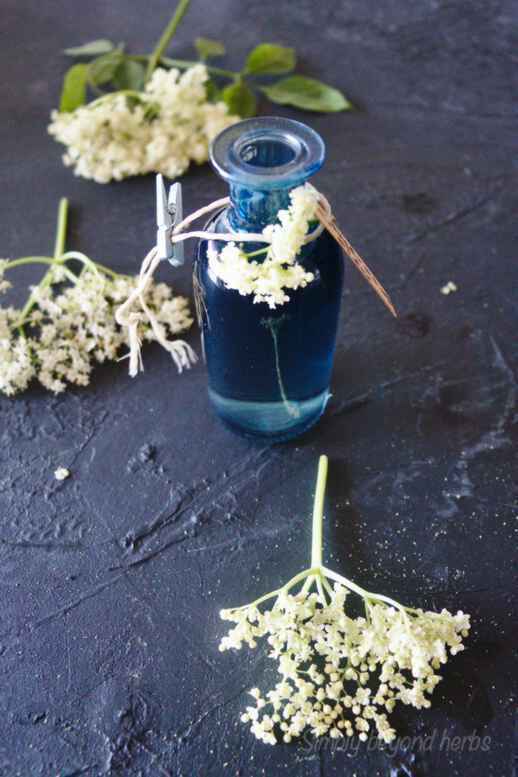
DIY hydrosol distiller
Make sure you carefully assemble your DIY hydrosol distiller that you need for the process of making hydrosol as all parts need to fit together. Parts you will need:
- Cooking pot with a lid that fits upside down.
- two heat-safe bowls. Place the first bowl upside down on the bottom of the cooking pot with the second on the top upright to collect the condensed water. The selection of bowls is imperative for a smooth process. When you assemble them, ensure a gap between the top of the bowl and the upside-down lid.
- Prepare at least 1 kg of ice cubes
- I used a pipette to suck the melted water from the lid.
How to make hydrosol
Make a hydrosol at home
I used elderflowers to show you the process.
First step – gather the herb
Collect 2 cups of fresh plants and place them in the medium-size cooking pot so the bottom is completely covered.
Second step – make the distiller
Make a space in the center of the bottom and place a small bowl upside down in the center of the base of a medium stockpot. Then place a medium glass bowl on top of the ramekin in the stockpot.
Pour two cups of distilled water into the pot covering the flowers completely with water to the max but not too high. You can also use filtered water.
Lastly, place the upside-down lid on top of your pot. This will become the condensation place where the vapor condenses on the lid and drips in the form of hydrosol in the collection vessel.


Third step – add ice cubes.
Now you are ready to switch the heat source, bring it to a boil, and turn it down to a slow simmer. Add a bag of ice on top of the lid of the pot.
Fourth step – collect the water in the pot.
Gradually the ice starts to melt, so use a pipette or spoon to remove the water. Add another batch of ice cubes and replace the ice as it melts until your bowl is full. It takes approximately 20 minutes and one kilogram of ice for me. You can let the herbal hydrosol simmer for a few minutes or until the water is completely gone, depending on how much floral water you want to make.
Making hydrosol is a slow process when you make a potent herbal extract drip by drip. So don’t try to speed up the process by increasing the heat.

Once cooled, pour true hydrosol into a sterile jar and close the lid.

HERE ARE A FEW TIPS FOR BETTER RESULTS:
- Make sure there is always water at the bottom of the pot
- Don’t remove the lid during the process, as the hydrosol quickly evaporates.
- Once you turn off the heat, remove the pot from the heat and wait until the top and bowl cool a bit.
Uses and benefits of Elderflower hydrosol
Essential oils and hydrosols capture goodness from the plant and have similar properties; hydrosols are just a lot less concentrated.
It makes it an ideal ingredient for dry or sensitive skin. In addition, hydrosols also contain water-soluble plant compounds that aren’t found in essential oils.
IN CREAM AND LOTIONS
You can use this floral water instead of water or tea infusion to make creams or lotions.

In toners.
Hydrosol is considered astringent and can tone and balance your skin, thus making it an excellent toner. I love to mix Elderflower hydrosol with witch hazel, apple cider vinegar, and aloe to remove the last remnants of makeup before applying a moisturizing cream. The rose hydrosol is excellent for balancing, healing, and restoring skin pH levels.
As a body spray.
Pour it into a spray bottle and refresh your body to reduce stress and anxiety.
Facial spritz.
Flower water is cooling and soothing; an aromatic hydrosol spritz on the face can refresh and tone tired skin.
Drink it!
You can also drink it! YOu can also take homemade hydrosol can internally for immune support. Take a teaspoon every hour at the first sign of a cold or the flu.
In a facial mask.
Mix this floral water with clay to make a facial mask that possesses astringent properties and refreshes and rejuvenates your skin. The reason why pure hydrosols can be used on your face without any concern is that they don’t contain any alcohol.
In a bath.
Add it to the bath to make a relaxing and calming bath experience.
As a perfume.
This scented essential oil water can serve as a deodorant or perfume spray when sprayed underarms to prevent body odor
Foot spray.
It also helps to control foot odor. Spray it on feet directly or add a splash to this DIY foot bath
After shaving.
For its astringent properties, this floral water is suitable to apply after shaving (Peppermint hydrosol)
For inflamed eyes.
Its soothing, anti-inflammatory and calming effect may help with inflamed eyes. Simply steep cotton pads in the hydrosol and apply to your inflamed eyes.
Puffy eyes.
Due to rutin content, this DIY hydrosol is effective with puffy eyes and dark circles under the eyes.

Store the hydrosol in a dark, cool place, such as a refrigerator. If you prefer to use it on your face at room temperature, split it into two bottles – one kept in the fridge with longer shelf life and the other in a cupboard to be used within a few weeks.
Yes, it is possible! You can even combine dried and fresh; make sure you double the herbs needed to make hydrosol when you use dried. In our case, we used 15 fresh heads, the weight of each is approximately 7 g, total weight is 105 g. Therefore, we need to use 210 g of dried elderflower to make 1 cup of elderflower hydrosol.

How to make hydrosol and 12 ways to use it
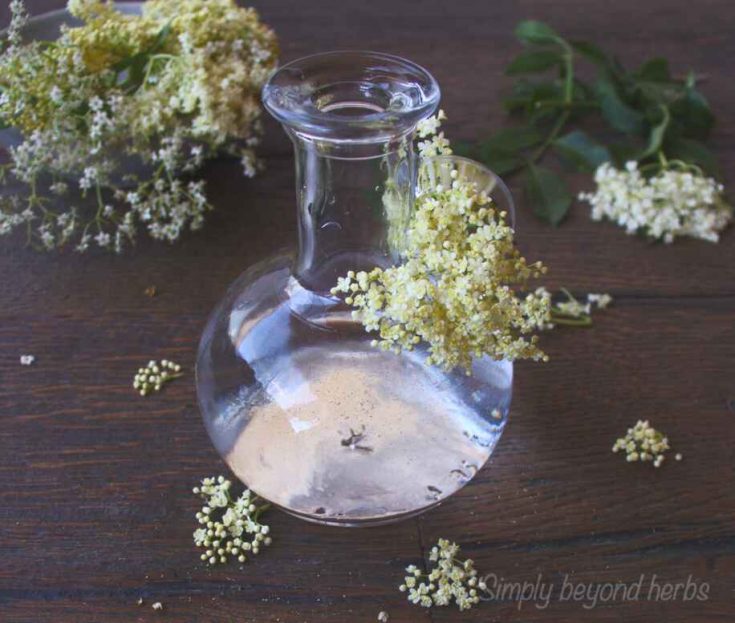
Learn how to make a hydrosol to enhance your skin or hair. This aromatic water is made of steam distillation of fresh or dried herbs and has multiple uses.
Tools
- cooking pot and a lid that fits upside down.
- 2 heat-safe bowls
- 1 kg of ice cubes.
- Pipette, ladle or turkey baster to suck the melted ice from the lid
Instructions
- Collect 2 cups of fresh plants and place them in the medium-size cooking pot so the bottom is completely covered.
- Make a space in the center of the bottom and place a small bowl upside down in the center of the base of a medium stockpot. Then place a medium glass bowl on top of the ramekin in the stockpot. Pour two cups of distilled water into the pot covering the flowers completely with water to the max but not too high. You can also use filtered water. Lastly, place the upside-down lid on top of your pot. This will become the condensation place where the vapor condenses on the lid and drips in the form of hydrosol in the collection vessel.
- Now you are ready to switch the heat source, bring it to a boil, and turn it down to a slow simmer. Add a bag of ice on top of the lid of the pot.
- Gradually the ice starts to melt, so use a pipette or spoon to remove the water. Add another batch of ice cubes and replace the ice as it melts until your bowl is full. It takes approximately 20 minutes and one kilogram of ice for me. You can let the herbal hydrosol simmer for a few minutes or until the water is completely gone, depending on how much hydrosols you want to make. Making hydrosol is a slow process when you make a potent herbal extract drip by drip. So don't try to speed up the process by increasing the heat. Once cooled, pour true hydrosol into a sterile jar and close the lid.
Notes
- Make sure there is always water at the bottom of the pot
- Don't remove the lid during the process, as the hydrosol quickly evaporates.
- Once you turn off the heat, remove the pot and wait until the top and bowl cool a bit.
Recommended Products
As an Amazon Associate and member of other affiliate programs, I earn from qualifying purchases.

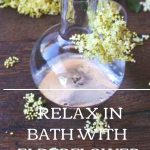






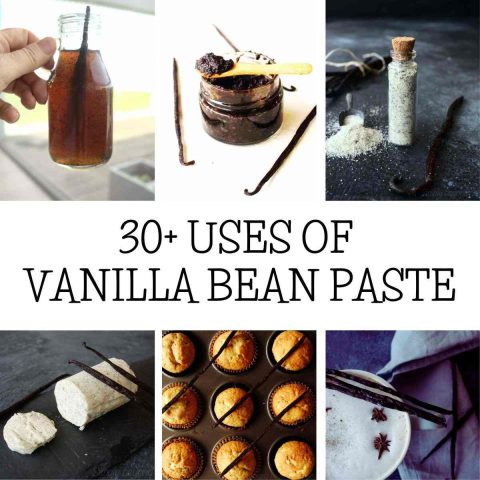

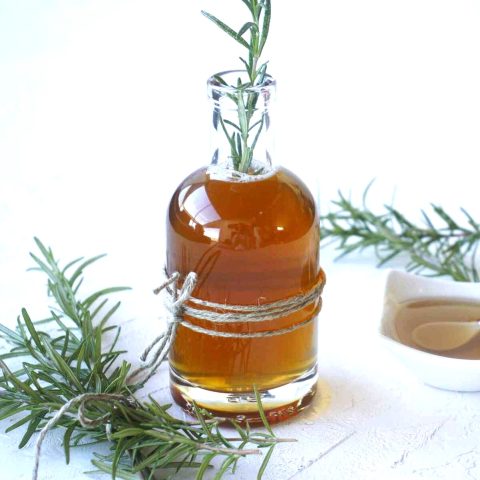


This would make a wonderful face toner! It would be so uplifting.
I want to try this! Now to just find somewhere to forage the blossoms…..